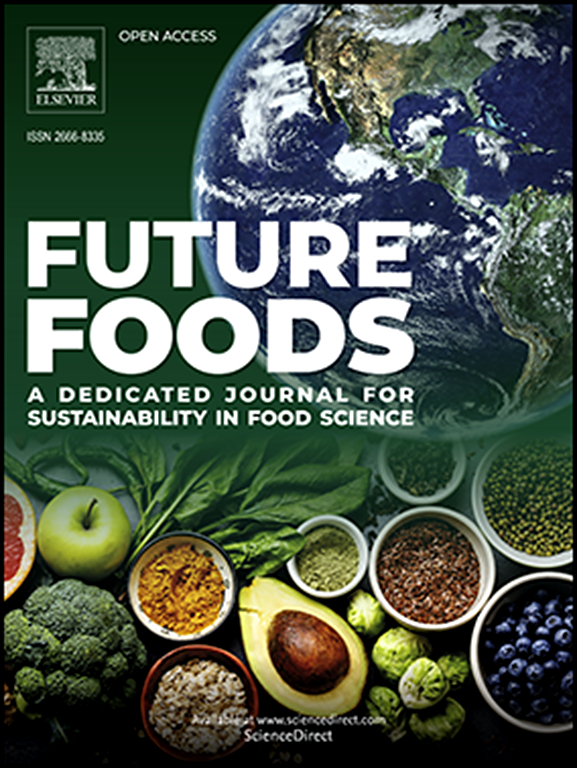Eggplant anthocyanin-mediated zinc oxide nanoparticles incorporated multifunctional film (hydroxypropyl methylcellulose/chitosan) for Caspian Sea white fish (kutum Rutilus frisii) packaging
IF 7.2
Q1 FOOD SCIENCE & TECHNOLOGY
引用次数: 0
Abstract
Multifunctional films were fabricated from hydroxypropyl methylcellulose (HPMC), chitosan (CH), eggplant peel anthocyanin (ACNs), and zinc oxide nanoparticles (ZnONPs) biosynthesized with caps’ extract of eggplant (1, 3, 5 %) for application as Caspian Sea white (kutum Rutilus frisii) packaging. The extraction efficiency from eggplant caps was 3.73%. Dynamic light scattering results showed a uniform distribution of ZnO with a polydispersity index of 0.332. Fourier-transform infrared spectroscopy and X-ray diffraction results confirmed the presence of CH, ACNs, and ZnONPs in the film matrix. The incorporation of CH, ACNs, and ZnONPs into the HPMC matrix increased the moisture content, water vapor, and oxygen permeability, increasing tensile strength. Increasing the level of ZnONPs in the polymer matrix increased the migration rate. The fabricated films exhibited a clear color change from red in acidic conditions to yellow in alkaline conditions, depending on the pH. The HPMC-CH-ACNs-3%ZnONPs smart films effectively extended the shelf life of whitefish fillets by reducing mesophilic bacteria growth (8.16-7.67 log CFU/g) and total volatile basic nitrogen values (11.76±0.56 mgN2/kg), increasing a*color (redness) indices within 7 days of storage time.
求助全文
约1分钟内获得全文
求助全文
来源期刊

Future Foods
Agricultural and Biological Sciences-Food Science
CiteScore
8.60
自引率
0.00%
发文量
97
审稿时长
15 weeks
期刊介绍:
Future Foods is a specialized journal that is dedicated to tackling the challenges posed by climate change and the need for sustainability in the realm of food production. The journal recognizes the imperative to transform current food manufacturing and consumption practices to meet the dietary needs of a burgeoning global population while simultaneously curbing environmental degradation.
The mission of Future Foods is to disseminate research that aligns with the goal of fostering the development of innovative technologies and alternative food sources to establish more sustainable food systems. The journal is committed to publishing high-quality, peer-reviewed articles that contribute to the advancement of sustainable food practices.
Abstracting and indexing:
Scopus
Directory of Open Access Journals (DOAJ)
Emerging Sources Citation Index (ESCI)
SCImago Journal Rank (SJR)
SNIP
 求助内容:
求助内容: 应助结果提醒方式:
应助结果提醒方式:


